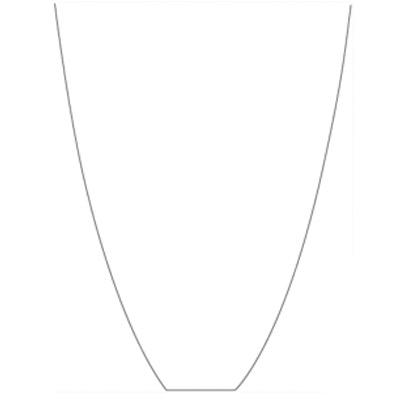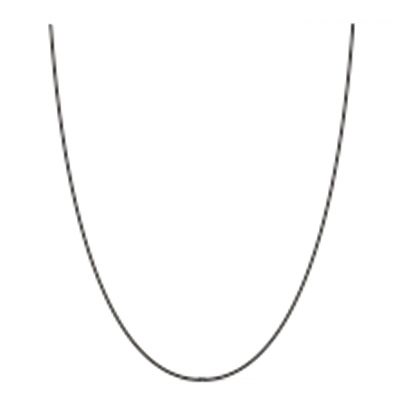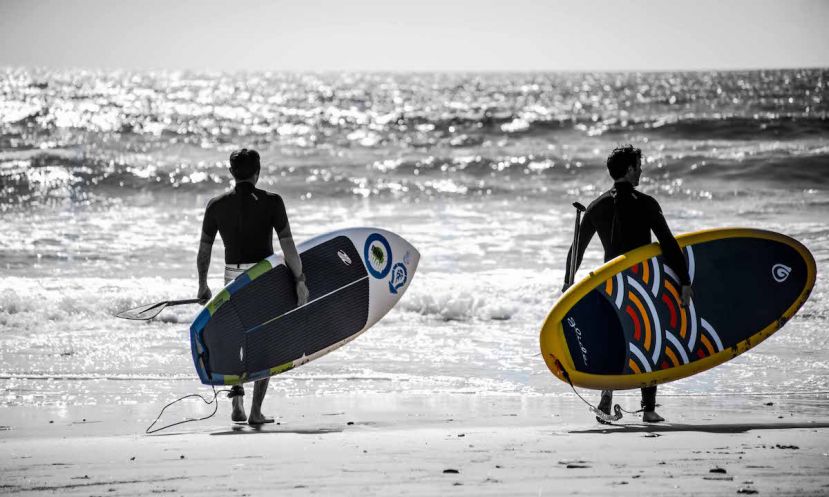SUP Tail Design 101
- Written by Layne Pennell
- Published in Gear
- Comments::DISQUS_COMMENTS
Have you ever wondered why the tail of your paddle board is flat and square while the ones down the beach have rounded tails? There is a reason for the different tail shapes, and it’s not just cosmetic. A SUP’s tail shape is integrally tied to how the board is designed to perform. So if you’re shopping for a new paddle board, it is worth paying attention to the shape of the tail.
When a SUP comes into contact with flowing water, it slows the water’s natural ability to flow freely. In other words, friction is created between the board and the water. This is a SUP shapers greatest challenge, to design a board that reduces this friction as much as possible without compromising its desired performance goals.
Hydrodynamic testing has shown that water flows at its quickest rate around a paddle board when it’s at the front and tail sections of the board. Water flows slowest in the middle section of the board. What does this mean?
Essentially, as the water flows to the tail section of your SUP, it’s accelerating. This is where tail shape comes into play. When you change the shape of the tail, you change the amount of surface area the exiting water comes into contact with. This will influence how quickly you can accelerate and how much control you have.
While there are more than a dozen different tail shapes for surfboards, stand up paddle boards commonly use one of three different tails. These are the shapes you will likely see in your local store.
Squaretail
 The Squaretail is a classic design. It was the first tail shape in surfboard design, and it remains popular to this day. Squaretail boards are beneficial for beginners to paddle boarding or paddle surfing as it preserves the board’s volume well behind the forward fins. This helps flotation and improves stability. The squaretail gets rid of a lot of water very quickly, making it a very fast tail shape.
The Squaretail is a classic design. It was the first tail shape in surfboard design, and it remains popular to this day. Squaretail boards are beneficial for beginners to paddle boarding or paddle surfing as it preserves the board’s volume well behind the forward fins. This helps flotation and improves stability. The squaretail gets rid of a lot of water very quickly, making it a very fast tail shape.
The exiting water flow accelerates straight off the rail line which abruptly ends at the squared edge of the tail. Unfortunately because the water is simply “dumped” off the tail’s edge, the squaretail tends to turn a little awkwardly compared to Round tail boards.
Many All Around and Touring styled boards tend to have square tails.
Round Tail
 Round tail paddle boards don’t have the raw acceleration of a squaretail, but what this tail lacks in off-the-mark speed it gains immensely in control and subtlety of turning angles. The round tail moves water off the tail and rails in a diffuse fashion. This tail allows water to wrap around its contoured shape for better traction than the square tail. Simply put, it turns better, especially on the waves. Because it’s wider, this shape is more versatile than the pintail. The added width helps to create lift which will provide added speed in slow spots on the wave.
Round tail paddle boards don’t have the raw acceleration of a squaretail, but what this tail lacks in off-the-mark speed it gains immensely in control and subtlety of turning angles. The round tail moves water off the tail and rails in a diffuse fashion. This tail allows water to wrap around its contoured shape for better traction than the square tail. Simply put, it turns better, especially on the waves. Because it’s wider, this shape is more versatile than the pintail. The added width helps to create lift which will provide added speed in slow spots on the wave.
Round tail shapes are used in All Around and Surf oriented boards.
Pintail
 A Pintail is exactly as you would imagine it to be, narrow and pointy. This type of tail is the narrowest of all paddle board tail designs. It provides maximum flow as the water exits the tail section of the board without being “dumped” providing a better hold.
A Pintail is exactly as you would imagine it to be, narrow and pointy. This type of tail is the narrowest of all paddle board tail designs. It provides maximum flow as the water exits the tail section of the board without being “dumped” providing a better hold.
Less width minimizes the tail's surface area allowing the board to dig into the water causing the it to track and maintain direction. Pintail paddle boards can be difficult to maneuver and they are not ideal for wave riding (even small waves). Pintails simply don’t provide the surface area needed to create lift.
Because of its ability to track while quickly moving water off the board’s tail, you’ll find pintails mainly on Racing and Touring boards. Some pro level surf SUPs will also have pintails.
Now that you know the purpose of the different tail shapes, take notice when you’re shopping. Make sure that you get the right tail to get what you want out of your new SUP.
To see more SUP Tips, click HERE.
© Supconnect.com Copyrighted Exclusive Content

Layne Pennell
Layne Pennell has been stand up paddle boarding for 10+ years and loves all aspects of the sport. After paddling daily while living in Mexico for several years, he returned to Alberta, Canada and brought his passion for SUP with him. Layne teaches paddle boarding to beginners, and his company Wappa Paddle Boards builds environmentally friendly bamboo stand up paddle boards.
Website: www.wappapaddleboards.com/





